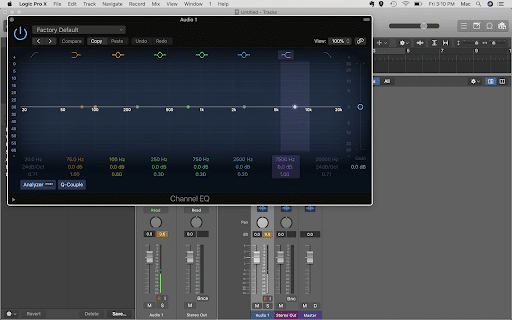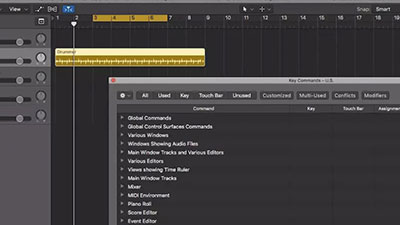Logic Pro X Vst Plugins Install
This article explains how to insert Native Instruments plug-ins in Logic Pro X, including: Inserting instrument plug-ins (e.g. MASSIVE, KONTAKT, etc.) in a software instrument track. Inserting effect plug-ins (e.g. GUITAR RIG 5, SUPERCHARGER, etc.) in an audio FX insert slot. Mar 13, 2019 Download FabFilter plug-ins for Windows or Mac OS X. Available in VST, AU, AAX and AudioSuite formats, both 32-bit and 64-bit. Logic Pro X: Importing sample libraries The EXS24 comes with an enormous library of sampler instruments, but you can also import third-party sample libraries.
If you can open Logic Pro or MainStage, but you're having issues with your project or concert, try bypassing plug-ins. If you can't open Logic Pro or MainStage, try removing plug-ins. If a recently-installed plug-in isn't available in Logic Pro or MainStage, try the following in the order listed until you can find the plug-in: Restart your Mac. Moving The Logic Pro X Sample Libraries. Now that you have an understanding of the benefits of using a dedicated external sample hard drive, let me show you step by step how to move the Logic Pro X sample libraries to an external hard drive using Folder Aliases inside of OS X.
If you're using third-party plug-ins, try any of these recommendations to fix your issue depending on what you're experiencing:
- If you can open Logic Pro or MainStage, but you're having issues with your project or concert, try bypassing plug-ins.
- If you can't open Logic Pro or MainStage, try removing plug-ins.
- If a recently-installed plug-in isn't available in Logic Pro or MainStage, try the following in the order listed until you can find the plug-in:
Bypass Audio Units plug-ins
If you're having an issue in a particular Logic Pro project or MainStage concert that uses third-party plug-ins, bypass each third-party plug-in in the project one-by-one, testing the project after you bypass each plug-in.
You can bypass plug-ins several different ways:
- Place the pointer over the plug-in slot in a channel strip, then click the Bypass button so the slot dims.
- Option-click the plug-in slot so the slot dims.
- In the plug-in window, click the Bypass button so the slot dims.
If bypassing a plug-in fixes your issue, check with the manufacturer to see if the plug-in is compatible with your version of macOS, and for possible updates.
Remove Audio Units plug-ins
If you can’t open Logic Pro or MainStage, try manually removing plug-ins.
- Find the plug-in file on your Mac.
- If you suspect a particular plug-in, locate the file for the plug-in in the folder, then drag the file to the Desktop.
- Try to reopen the app.
If you still can't open Logic Pro or MainStage:
- Create a new folder on the Desktop.
- Move all the plug-in files that appear in their installation locations to the new folder.
- Try to open Logic Pro or MainStage.
- If you can open the app, replace each plug-in file to its original location one-by-one. Quit and reopen the app after you replace each plug-in file. If you can't open the app after replacing a particular plug-in file, that plug-in might be corrupted or incompatible. Try reinstalling the disabled plug-in or check with the manufacturer for an update.
Restart your Mac
If your Mac is running macOS High Sierra or later and you recently installed a plug-in that isn't available in Logic Pro or MainStage, restart your Mac. Before you restart your Mac, confirm that the plug-in is 64-bit compatible. 32-bit plug-ins aren't compatible with Logic Pro or MainStage.
- Choose Apple menu > Restart.
- Open Logic Pro or MainStage.
- Click an Audio Effect, Instrument, or MIDI Effect slot to see if the plug-in is available in the pop-up menu. If the plug-in still isn't available, rescan the plug-in.
Confirm that the plug-in is installed
If a recently-installed plug-in still isn't available after restarting your Mac, confirm that the plug-in is installed:
- Choose Logic Pro > Preferences > Plug-in Manager, or MainStage > Preferences > Plug-in Manager.
- In the Plug-in Manager, locate the plug-in. To filter the list by manufacturer, click the manufacturer's name in the left column.
- If the plug-in doesn't appear in the Plug-In Manager, find the plug-in file.
If 'not authorized' appears in the Compatibility column for the plug-in, make sure the plug-in is properly authorized as documented by the manufacturer. - Reinstall the plug-in, then restart the computer.
- If the plug-in still isn't available, check with the manufacturer to see if the plug-in is compatible with your version of macOS, and for possible updates.
Rescan a plug-in
If the recently-installed plug-in is installed, use the Plug-in Manager to rescan the plug-in.
- Choose Logic Pro > Preferences > Plug-In Manager, or MainStage > Preferences > Plug-In Manager.
- In the plug-in Manager, locate the plug-in you want to check. To filter by manufacturer, click manufacturer's name in the left column.
- If 'failed validation' appears in the Compatibility column for the plug-in, select the plug-in in the list, then click Reset & Rescan Selection.
If 'not authorized' appears in the Compatibility column for the plug-in, make sure the plug-in is properly authorized as documented by the manufacturer. Then rescan the plug-in. - If the plug-in fails validation again, check with the manufacturer to see if the plug-in is compatible with your version of macOS, and for possible updates.
Rescan all plug-ins
To automatically rescan all installed plug-ins, remove the Audio Unit cache file.
- In the Finder, press Option and choose Go > Library.
- In the Finder window, go to Library/Caches/AudioUnitCache.
- Move the files from AudioUnitCache folder to the Desktop.
- Restart the computer, then open Logic Pro or MainStage. All installed Audio Units plug-ins will be rescanned.
Learn more
BlueARP is a MIDI Arpeggiator pligin with pattern sequencer style, designed for electronic music genres.
For a long time I was seeking for an arp that would allow me to do things like in hardware and finally decided to develop my own one. I took all the best I found in hardware groove boxes and arpeggiators (Korg Electribes, Novation Nova, arrangers) and combined it into single intuitive tool.
BlueARP can be also characterised as: pattern arpeggiator, step sequencer style arpeggiator, arpeggiator with pattern input.
I started development in 2012, now BlueARP is quite stable but I’m keeping further development.
BlueARP comes as a VST plugin for Windows, VST plugin for Mac OSX and MIDI-FX plugin for OSX (to use with Logic Pro X).

Download BlueARP and other stuff:
[ download BlueARP VST for Windows & OSX) ]
Discuss BlueARP at kvraudio forums:
http://www.kvraudio.com/forum/viewtopic.php?t=361311
Best Plugins For Logic Pro X

Watch tutorials:
http://www.youtube.com/watch?v=pZtb6hZGubY
http://www.youtube.com/watch?v=CB8aCeFsilM
Free Logic Pro X Vst
Watch demonstarion videos:
http://www.youtube.com/watch?v=Wr9WY35ulqU
http://www.youtube.com/watch?v=hPulieiLgZs